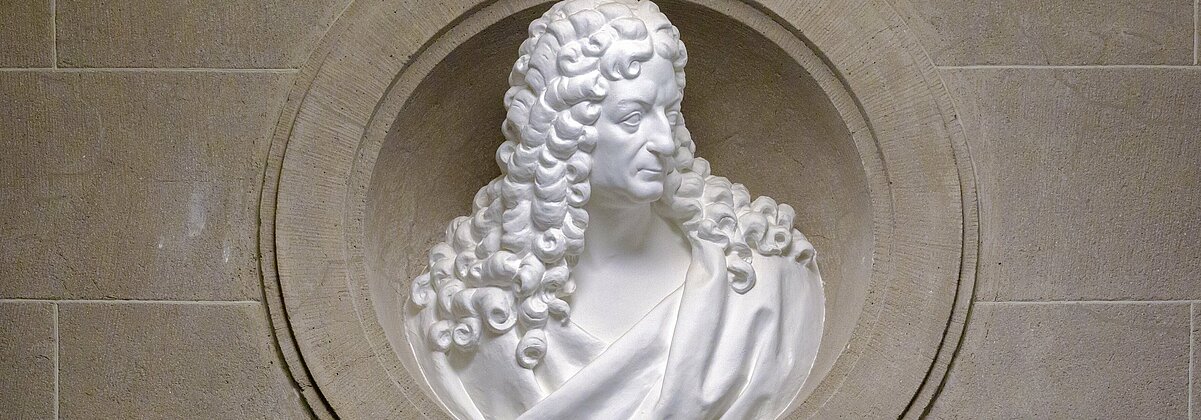


The history of the Berlin-Brandenburg Academy of Sciences and Humanities goes back to the Society of Sciences of the Elector of Brandenburg (Kurfürstlich Brandenburgische Sozietät der Wissenschaften). It was founded in 1700 by Gottfried Wilhelm Leibniz (1646 – 1716) under Elector Frederick III of Brandenburg.
From the start, this institution united the natural sciences and the humanities, which made it the prototype for many academies that followed. Under the Prussian King Frederick II, who was a patron of the sciences, the Academy took on ever-greater significance. After merging with the Nouvelle Société Littéraire to form the Royal Academy of Sciences (Königliche Akademie der Wissenschaften), it moved in 1752 to a new two-storey building on Unter den Linden. This was its headquarters for more than 150 years. With the end of the monarchy (1918), the Royal Prussian Academy of Sciences in Berlin (Königlich Preußische Akademie der Wissenschaften zu Berlin) was named the Prussian Academy of Sciences (Preußische Akademie der Wissenschaften) and gained international recognition and fame.
After World War II, the Academy was under the administration of the Soviet Zone of Occupation (SBZ) and re-opened as the German Academy of Sciences in Berlin (Deutsche Akademie der Wissenschaften zu Berlin). In 1949 it moved to the building of the former Prussian Maritime Trade Company (Preußische Seehandlung) at Gendarmenmarkt. As of 1972, the Academy of Sciences of the GDR (Akademie der Wissenschaften der DDR), which had 400 members and 24,000 employees, became a national research centre with institutes across the republic. It conducted basic research and developed task-related applications. After the Reunification the Academy was ordered to dissolve by December 1991. The Berlin-Brandenburg Academy of Sciences and Humanities was reconstituted on the basis of the interstate treaty between Berlin and Brandenburg in August 1992.